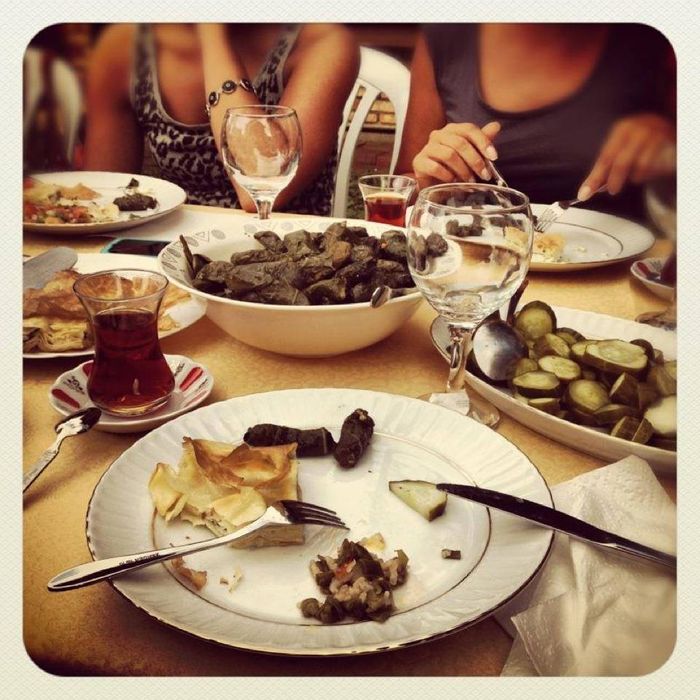"You see this color?" my Turkish friend asked. "We say it's the color of rabbit's blood (tavşan kanı)." Grinning, the waiter in the tea garden handed us our afternoon tea and pastries. Peering through the delicate clear glass, cinched at the "waist" in typical Turkish fashion, I marveled at the deep earthy brown pigment of the tea. Black tea in Turkey, once brewed, has a reddish hue and metallic scent, reminiscent of blood. An apt analogy, in fact. Tea is the lifeblood of Turkey, where it is consumed like water.
Home to some of the finest black teas in the world, Turkey fueled my love for the beverage. Suddenly, I had access to ultra-fresh and super tasty tea. Better yet, because tea is so well integrated within Turkish culture, I was surrounded by a community of tea drinkers with whom I could enjoy tea daily.

(pickles).These are pickles from Giresun, Turkey (Karadeniz - Black Sea).
The bittersweet flavor of Turkish tea has a transportive effect. Close your eyes as you sip this tea, and suddenly you find yourself in the Dolmabache Sarayi or Ciragan Sarayi, home to the Ottoman Royal family and Sultan's Vezirs (whom my great-grandfather was among!)
Here's my tea video about Turkish tea. Although it's in French, you may still enjoy seeing the way Turkish tea is prepared.
Context for this video
During my Fulbright year, I lived in the Black Sea region of Turkey in a city called Samsun. As part of my contribution to my students and to the university I was stationed at, I created short cultural videos to extend learning outside the classroom.
Leave a comment if you'd like to see more tea-related videos and let me know what types of tea you'd like me to cover.
Happy sipping,
MD
#teatracks
Thank you for reading!!